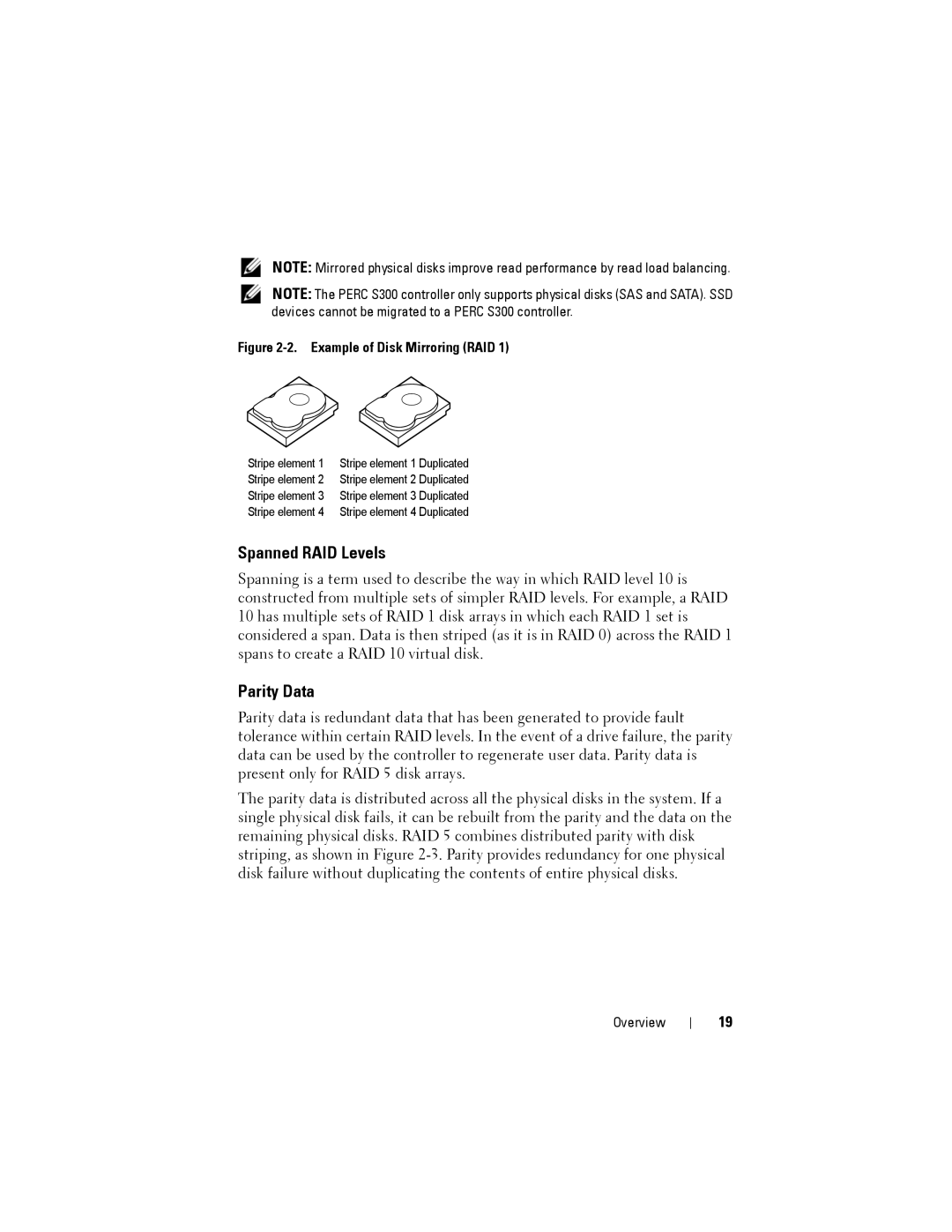
NOTE: Mirrored physical disks improve read performance by read load balancing.
NOTE: The PERC S300 controller only supports physical disks (SAS and SATA). SSD devices cannot be migrated to a PERC S300 controller.
Figure 2-2. Example of Disk Mirroring (RAID 1)
Stripe element 1 Stripe element 1 Duplicated
Stripe element 2 Stripe element 2 Duplicated
Stripe element 3 Stripe element 3 Duplicated
Stripe element 4 Stripe element 4 Duplicated
Spanned RAID Levels
Spanning is a term used to describe the way in which RAID level 10 is constructed from multiple sets of simpler RAID levels. For example, a RAID 10 has multiple sets of RAID 1 disk arrays in which each RAID 1 set is considered a span. Data is then striped (as it is in RAID 0) across the RAID 1 spans to create a RAID 10 virtual disk.
Parity Data
Parity data is redundant data that has been generated to provide fault tolerance within certain RAID levels. In the event of a drive failure, the parity data can be used by the controller to regenerate user data. Parity data is present only for RAID 5 disk arrays.
The parity data is distributed across all the physical disks in the system. If a single physical disk fails, it can be rebuilt from the parity and the data on the remaining physical disks. RAID 5 combines distributed parity with disk striping, as shown in Figure
Overview
19
